So You’re Telling Me There’s a Chance
Australian Property Market Update
6 March, 2019
We’ve seen what seems like a few little rays of property market data sunshine through the dark media clouds over the past few weeks. Is it time to call the bottom for Sydney and Melbourne home prices?

You may find yourself feeling a little like Lloyd Christmas at times – hanging on even the slightest glimmer of hope.
So let’s take a closer look at the most recent data and see if there is a chance the downward trend in house prices is nearing the bottom.
The Auction Market – Clearance Rates in the 60’s?
Two weeks ago, and this week, Sydney posted a preliminary clearance rate in the low 60’s. “So you’re telling me there’s a chance?” The final (not preliminary) results tell the true story.
Over the past four weeks, the nationwide auction clearance rate has been hovering around the 50 to 51 percent range. Auction volume has been gradually swelling since the market cranked back up in early February. However, auction supply remains weak for this time of year, with about 800 fewer homes taken to auction this week compared to the same time last year.
From the weeks of the 17th to the 24th of February (last week), we saw a significant surge in auction volume. With more homes on offer for buyers to choose from, auction clearance rates dipped last week, barely clearing 50 percent in both Sydney and Melbourne.
This week, with slightly fewer homes offered at auction, it appears based on preliminary reports, that auction clearance rates have again bounced back a little.
You’ll notice in the chart below I’ve compiled data from CoreLogic showing both the preliminary and final results over the past five weeks. Preliminary auction data is released on Monday morning, and is based on initial reports from agents at the end of the weekend. The final results, usually released on a Thursday, are most accurate, reflecting the totals of all auctioned properties.
It’s important to understand, we nearly always see the auction clearance rate drop from Monday to Thursday, as the preliminary data tends to have fewer unsuccessful auctions in the mix. Those properties finally make it into the count in Thursday’s report. Agents are quite happy with this, and may even use the subjective nature of the reporting to their benefit, as it helps to paint a rosier picture in the Monday morning headlines.
Following is the nationwide, Sydney and Melbourne auction data for the past five weeks. Notice the percentage point drop from preliminary (Monday) to final reporting (Thursday).
Week Ending | Total Auctions | Capital City Average | Sydney | Melbourne | |||
Prelim | Final | Prelim | Final | Prelim | Final | ||
536 | 47.8% | 42.8% | 53.7% | 49.5% | 44.1% | 44.3% | |
928 | 54.1% | 51.1% | 59.2% | 54.0% | 53.7% | 52.4% | |
1,450 | 55.2% | 51.2% | 61.0% | 54.6% | 54.2% | 52.5% | |
2,293 | 54.1% | 49.4% | 58.6% | 50.2% | 53.1% | 50.6% | |
3 March | 2,204 | 55.0% | N/A | 61.3% | N/A | 54.9% | N/A |
For all the final results in the other capital cities, click the relevant date in the table above.
Here are the latest preliminary auction results for all the capital cities:

Source: CoreLogic
Once this week’s final results are counted and reported tomorrow, expect the combined capital city clearance rate to sit between 50 and 51 percent, reflecting a slight improvement from the previous week, thanks to lower auction supply. Sydney might just clear 55 percent, but Melbourne will likely report in the low 50’s.
Keep an eye on supply in the coming weeks. Higher auction volume will mean lower clearance rates.
Home Prices – Is the Downward Trend Slowing?
While home values continued to decline in February (down 0.9 percent across our five largest capital cities), the rate of decline was slower than the previous two months. Is this an early sign that the downward trend is slowing? We’ll need a few more months of data before we can make that call.
Melbourne and Sydney dwelling values both fell about 1 percent in February, an improvement from January’s declines of 1.60 percent and 1.35 percent respectively. Perth’s weakness accelerated from a 1.0 percent decline in January to nearly 1.5 percent in February. Brisbane prices are down slightly, but Adelaide remained flat and Hobart surged 0.82 percent higher.
Melbourne and Sydney’s rolling twelve-month declines have increased to 9.14 percent and 10.37 percent respectively. This marks the first time we’ve seen double-digit annual falls. Adelaide and Canberra are in positive territory for the year, but Hobart is the standout, up more than 7 percent over the past twelve months.
How much have Melbourne and Sydney prices fallen from their respective peaks? According to CoreLogic’s back series of data, Sydney house prices peaked in July 2017, then four months later, prices began falling in Melbourne. Since their peaks, by my calculations, Sydney house prices have fallen 13.2 percent and Melbourne is down 9.62 percent.
For a little perspective, consider the average Sydney home buyer in mid-2017 with a 20 percent deposit on a $1 million property. There are thousands of these buyers, give or take a few hundred thousand on the purchase price.
That $1 million home is now worth $868,000, which represents a cash on equity loss of about 50 percent, factoring in deposit, stamp duty and legals. Their LVR, which started at 80 percent, is now at about 92 percent. If the current downward trend continues, these buyers are about eight months away from negative equity.
Here’s CoreLogic’s latest monthly median house price data:
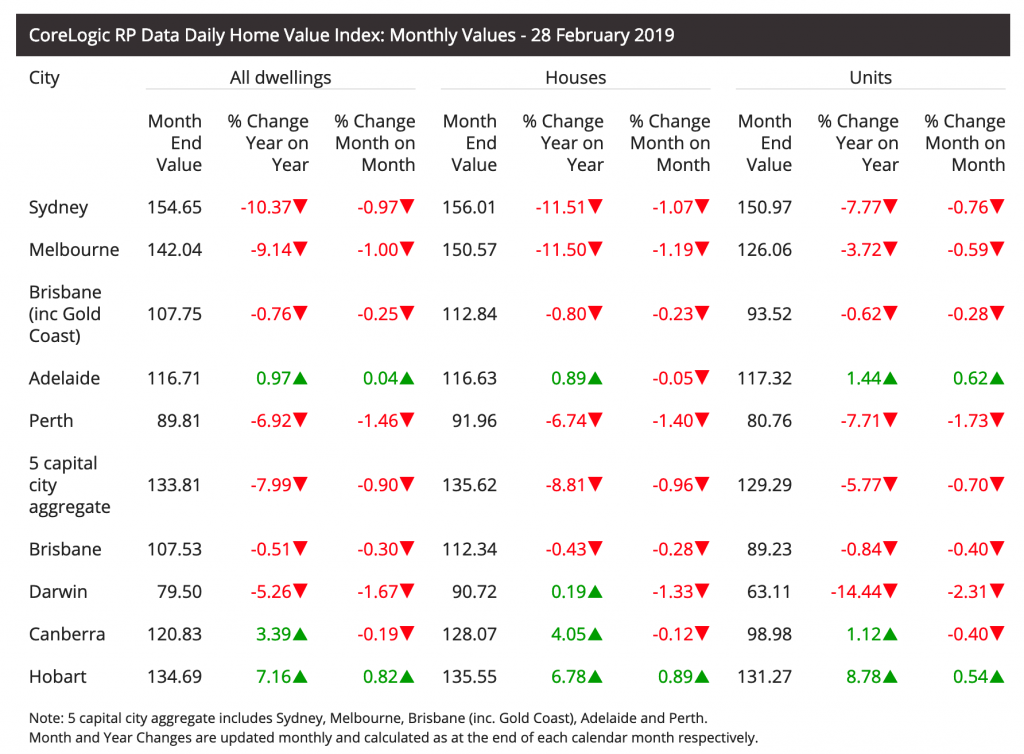 Source: CoreLogic
Source: CoreLogic
So how much farther will house prices fall?
Based on the current trend and the state of affairs in the lending market, the likely best case scenarios for Sydney and Melbourne seem to be falls of around 20 percent from their peaks. That would amount to another twelve months or more of falling prices.
AMP Capital’s economist Shane Oliver says,
“For Sydney and Melbourne our base case has been that prices would have a top to bottom fall of around 20% out to 2020. However, the further plunge in auction clearance rates and acceleration in price falls late last year suggest a deeper fall possibly of around 25% (although it’s impossible to be precise).”
If AMP’s prediction plays out, we’ll have wiped out about two and a half years worth of rising property prices, taking us back to early 2015.
ANZ has been a little more optimistic, predicting falls from the peak of around 15 to 20 percent. UBS Bank is also on board with the 20 percent peak to trough forecast.
But let’s keep things in perspective. House price growth so dramatically outpacing wages and consumer price inflation was never going to be sustainable.
As RBA chief Philip Lowe has been quick to point out,
“Even after the recent declines in Sydney, prices are still 75 percent higher over the decade. In Melbourne, they are 70 percent higher… We recognise that this correction will have an effect on parts of the economy. But our economy should be able to handle this, and it will put the housing market on a more sustainable footing.”
Central bankers… like Lloyd Christmas, always the optimists.
Interest Rates – Holding Steady, For Now
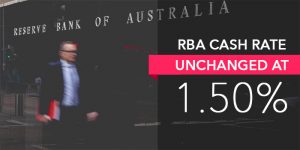
Speaking of the RBA, Philip Lowe and company met yesterday and decided to leave the cash rate on hold for a record 31 consecutive months, at the record low of 1.5 percent.
Their monetary policy statement suggests they’re banking on a strengthening labour market bringing a boost to wages, which they hope will bring economic growth. The problem, however, is that household spending sucks at the moment, thanks to weak growth in household income and falling housing prices.
Unless the RBA gets that boost in wage growth soon (highly unlikely), expect one or two rate cuts by year-end. This could be the one thing that actually does breath some life back into the property market.
The problem though is that a rate cut does not automatically mean lower mortgage borrowing costs. Whether lenders choose to pass these rate cuts on to variable rate mortgage holders is another matter. APRA and the Government will need to come to the party to loosen bank capital requirements and lending restrictions.
The Lending Market – Show Me the Money!
 I’ll need to mix film metaphors here because there’s not really much good news in the lending market at the moment. Housing credit growth just suffered its worst month since 1984, rising a meagre 0.2 percent in January. December looked just as bleak, with credit growth hardly better at 0.3 percent. The twelve-month growth figure now sits at about 4.4 percent, which is about as bad as it’s been since 2013.
I’ll need to mix film metaphors here because there’s not really much good news in the lending market at the moment. Housing credit growth just suffered its worst month since 1984, rising a meagre 0.2 percent in January. December looked just as bleak, with credit growth hardly better at 0.3 percent. The twelve-month growth figure now sits at about 4.4 percent, which is about as bad as it’s been since 2013.
In light of the expectation of more falls in house prices, such a decline in demand for mortgage lending should not be a surprise. In fact, until buyers are confident the worst is over, housing credit growth will likely continue to fall.
CoreLogic research analyst Cameron Kusher points to other psychological factors beyond supply and demand. Kusher says,
“I suspect that demand has certainly fallen, but possibly it has fallen a greater amount because people are talking to the bank lender or mortgage broker and the feedback they are given is that there is no point applying because with current credit conditions this just isn’t going to get approved.”
As I mentioned, before home prices can start rising again, the credit markets will need to loosen up. Post Royal Commission and with banks now facing the prospect of class action lawsuits from borrowers, it’s difficult to build a case for where this easy money will come from.
Building Approvals – A Glimmer of Hope?
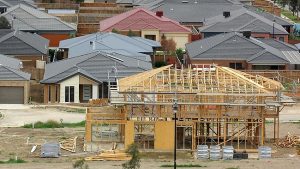
Back to some good news…
After two months of the worst building approvals data since the GFC, new construction prospects were looking up in January, with a slight bounce in approvals of 2.5 percent.
Unfortunately, there’s little reason to celebrate yet. Total approvals are still down by 28.6% from January last year. Developers are not only hesitant to start new projects, but also finding it increasingly more difficult to access finance for new acquisitions.

Source: Business Insider Australia
With few approvals in the future pipeline, once we work our way through the existing jobs underway, we could soon see the building industry in decline. This doesn’t bode well for the labour market nor for consumer spending on home improvement items. Weak building approvals does however eventually lead to lower supply, which could bring the market back to equilibrium.
“So you’re telling me there’s a chance.”
What does it all mean for property investors?

If you’re making offers in Sydney and Melbourne now, you’d be wise to do so under the assumption that there’s still more downside to come. You’ll need your renovation or subdivision to be able to absorb another 7 to 10 percent in price falls, just to be safe. That’s a tall order as vendors tend to be six months behind, no ahead, in their emotional property valuations.
If you’re entering the Sydney or Melbourne markets to buy and hold, be sure you have an opinion on how long it will take for the property market to start rising again (at a pace greater than inflation). Sydney house prices have historically tended to be flat periods (5 to 7+ years) before rising again. You’ll need to climb out of the negative cash flow hole before banking profits.
Thankfully, we have other markets in Australia where house prices are either very stable or rising. If you can’t get vendors to accept your offers in Sydney or Melbourne, then perhaps it’s time to look to Queensland, South Australia or Tasmania.
Comments
Got something to say? Post a comment...
You must be logged in to post a comment.

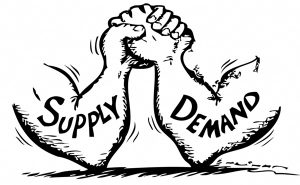
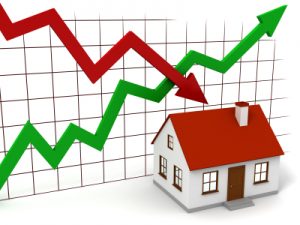




Very good and detailed article Jason, What do you think the total drop may be before we see rises again? 15%, 20% or even higher? I feel it may be 15 – 20% (really hoping it’s not more) but it’s hard to say like you said with the election yet to be held and the auction season really just about to get into the swing of it etc etc.
Thanks Sam. If the future is like the past, an RBA rate cut or two will slow down the decline. The problem is, rate cuts have become less effective because we have so much household debt now. My guess is 20% falls from the peak (Melbourne and Sydney) is best case.
No worries and good point about the household debt, okay I see, sounds realistic, let’s hope it’s not more of a drop.